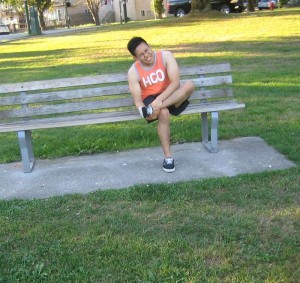The ankle is comprised of a complex collection of tendons, ligaments, bones and muscles. Even though the ankle is considered as a sturdy structure that is capable of bearing the weight of the body, it is also susceptible to injury and throbbing sensation can occur while engaging in low-impact activities such as walking. Since ankle throbbing can be debilitating, it is vital to fully understand what causes it to occur while walking and how it can be relieved.
Signs and symptoms
In most cases, the individual will notice ankle throbbing on the exterior, interior or both sides of the ankle. The individual can also experience it around the Achilles tendon which is the tendon that links the heel to the inferior leg muscles. The ankle throbbing can range from mild to severe.
There is the tendency for the ankle throbbing to worsen at the start of a walking routine and reduce as he/she progresses. Additional symptoms can include skin discoloration, instability, aching, tenderness, bruising, warmth or difficulty walking or moving.

What are the possible causes?
Overuse is considered as the most common form of injury while exercising. Take note that this can develop if the individual overuses the muscles, ligaments and tendons in the ankle with prolonged walking or by not taking any breaks as needed.
The ankle throbbing can also occur if the individual strains or sprains a ligament or muscle in the ankle region by abruptly changing directions, walking on uneven terrain or tripping. There are also some medical conditions such as gout, Achilles tendinitis and arthritis that can also instigate ankle throbbing while walking.
Treatment
It is vital to rest the affected ankle for about 48 hours. The ankle must be wrapped using an elastic bandage or even a brace in order to restrain it which helps to ease the ankle throbbing sensation as well as avoid re-injury in the future.
Apply an ice pack over the ankle right away for about 15 minutes at a time every 3 hours. The throbbing, pain and inflammation can be alleviated by raising the ankle using a few cushions or pillows, even while the individual is asleep.
You can provide acetaminophen or ibuprofen to help manage the symptoms. A doctor should be consulted if an individual is suspected with a medical condition such as tendinitis or gout.
Prevention
Ankle throbbing can be prevented by warming up with stretching or light aerobic activity before the walking routine. The ankles should be rotated and point the toes several times before and after each walking session.
Do not forget to use supportive walking shoes that are flexible along with a low heel with appropriate arch support. In addition, overuse injury can be prevented by cross-training with other activities such as cycling or swimming one or two times in a week.
